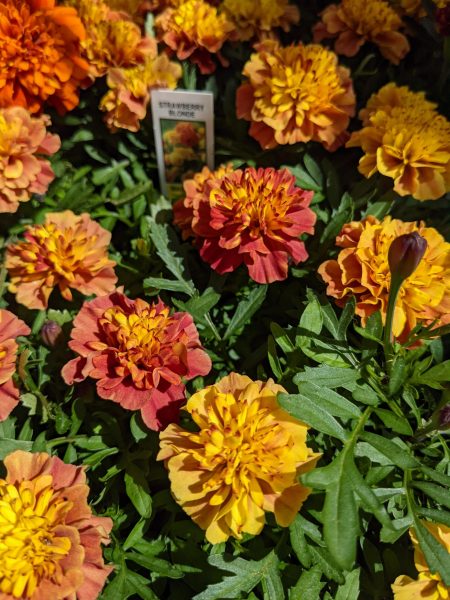
Digging Deeper – Late Spring Gardening
“What is one to say about June, the time of perfect young summer, the fulfillment of the promise of the earlier months, and with as yet no sign to remind one that its fresh young beauty will ever fade.”
– Gertrude Jekyll, On Gardening
This post is about late spring/early summer gardening tips and things to look for that may be showing up soon in your garden.
-
Fertilizer
Don’t forget water soluble fertilizers for container plants. Container plants are in a potting soil that do not contain enough nutrients for all season. Depending on the plant, you will need to add fertilizer to the water or use a slow release fertilize like Osmocote. Follow directions of product and individual plant needs for fertilization. Top dressing containers with compost can also be done to add some nutrients.
-
Boost for New & Established Plants
Most in-ground soils will benefit from adding organic material like compost and a starting fertilizer like Biotone Starter before planting or Plant Tone after planting. Top dressing the established perennials/shrubs with compost in the spring will give them an extra boost of nutrients. Plants like butterfly bush, delphinium, and clematis like if you put a mound of compost around their root ball.
-
Watering
Newly planted plants in the ground need deep watering so their roots reach down and establish themselves before winter and reduces stress on the plants. Water deeply a couple times a week. If it rains a little (pay attention to how many inches you get with a rain gauge), you can water around your new plants a little more to get water deep into the soil. It helps you conserve water and save time watering. 1″ of water per week is the recommended amount of water. Pay attention to the soil and if it is wet looking, hold off for another day. Best method is to stick your finger in the soil and if it’s dry a couple inches down, it’s time to water.
-
Weeding
Remove weeds now while they are small, as they grow quickly. Weeding is easy when soil is damp since it’s easier to pull the whole plant including the roots. Be careful not to walk on soil around your plants to avoid compaction of the soil.
-
Prevent Fungal Diseases
With rain and warming weather you need to be proactive about fungal diseases. It’s best to prevent it, instead of treating it because once it starts, you can’t get rid of it completely. Treat your plants that have a higher chance of fungal issues with a fungicide before you see signs of it. For example, tomatoes usually get blight so best to treat with Bonide Revitalize or Copper Fungicide before it starts. Make sure to water your plants at the base and water in the morning when possible so the water can dry before it cools off at night. Mulch around your plants as well to help prevent fungus from the soil splashing on your plants.
- Insect damage is going to start. Keep an eye on your plants for damage to their foliage. It’s important to remember, a little bit of insect damage is not bad and if you see an insect, it doesn’t mean they are bad. We need to move passed the thought that bugs are icky and nuisance. There are very important insects that are good for the garden and actually improve plant health.
Look for these invasive species instead:
Japanese Beetles: Metallic looking green/bronze beetles flying or munching on landscape plants. They love roses, hollyhock, cherry trees, plums, grapes, blackberries, and linden trees. They can be found snacking on other plants as well. Read more about them here. Incorporate plants that repel Japanese beetles such as catnip, chives, garlic, nasturtium, and white geranium around your susceptible plants. Jumping Worms: Although we haven’t had any recordings of jumping worms in our area, these can be very detrimental to lawns and gardens. There are sightings of these worms in the Minneapolis/St. Paul area so if you are doing any transplanting of plants from that area, purchases of mulches and soils, or any plant swap around our area. Read more about them here so you can know what to do to avoid them or if you see them, how to alert the U of MN Garden Extension. There are no proven ways to eradicate these worms yet.
Getting rid of insects isn’t always easy and great care should be taken if you choose to spray with insecticides, even ones labeled organic. It’s still an insecticide made to kill insects.
*Quick side note about fungus since we have been having cool springs the last couple years. With cool/wet weather you may encounter anthracnose on your plants. If you are seeing brown spots on trees and shrubs early in the spring it may be this.
